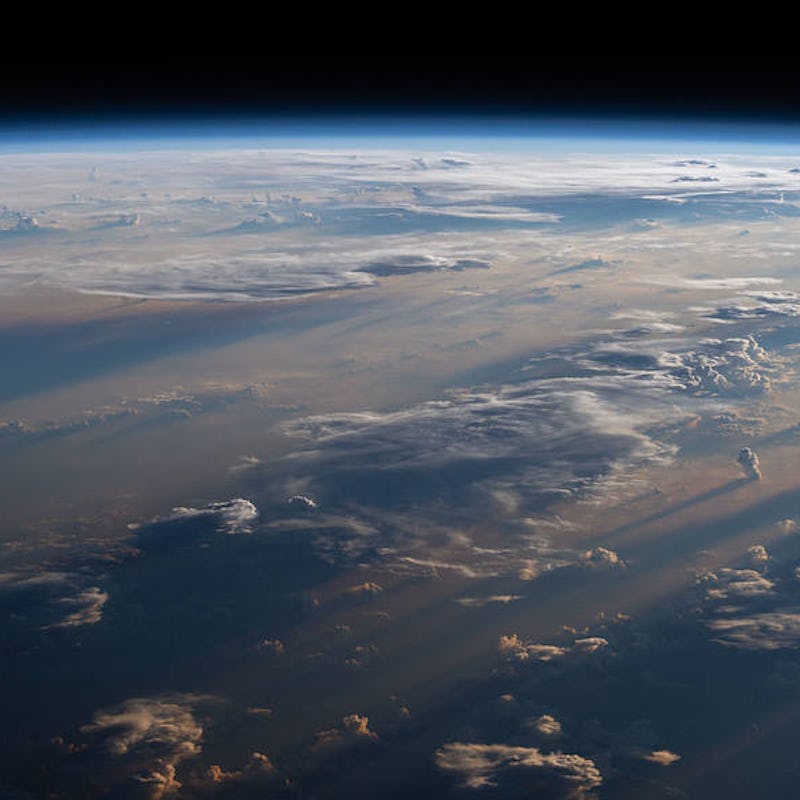NASA
In a study recreating the Earth's early history, scientists argue an ancient collision with another object in space may have caused Earth to lose somewhere between 10 to 60 percent of its atmosphere.
NASA/GSFC/Arizona State University
Previous research has suggested collisions of this kind during the late stages of a planet's formation period can affect its atmosphere.
In the new study, researchers ran more than 300 computer simulations of massive objects colliding with rocky planets with thin atmospheres, like Earth.
NASA
To be habitable, a planet’s atmosphere needs to be thick enough to transfer heat and offer insulation. If the Earth didn’t have its atmosphere, the temperature at the surface would be as low as -20 degrees Celsius.
In this way, the objects that collided with a young Earth had a major, lasting effect on life as we know it.
